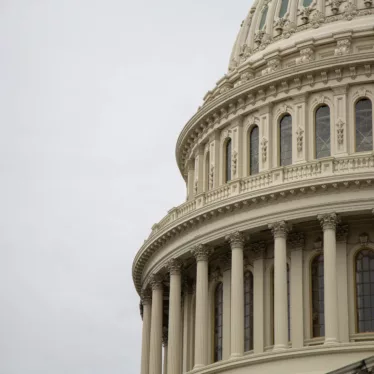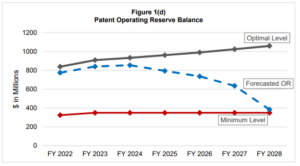Introduction
There is a potential for a U.S. federal government shutdown on October 1, 2023, in view of the ongoing discussions in Congress regarding funding for Federal Fiscal Year 2024 (FFY24). The longest government shutdown was under the Trump Administration, which was also the most recent in history, lasting from December 22, 2018, to January 25, 2019 (a full 34 days).[1] There have been twenty-two shutdowns over the past 50 years. Government shutdowns are most common when the white house, senate, and house of representatives are not controlled by a single party.
In the event of a shutdown, it is expected that each federal agency will post operational contingency plans and disseminate specific guidelines. About 13 departments and agencies have posted contingency plans, but many are plans from prior (e.g., 2018-2020) shutdowns.
This memorandum aims to provide current guidance, with an overview of what to anticipate during a government shutdown, focusing on its ramifications for USPTO, and outlining proactive measures that can be taken in preparation for such an event.
United States Patent and Trademark Office (USPTO)
The USPTO, which is the national patent office and trademark registration authority, is an agency within the U.S. Department of Commerce. The Department of Commerce (DoC) last provided a Plan for Orderly Shutdown Due to Lapse of Congressional Appropriations on September 27th, 2021.[2] The DoC has not provided an October 2023 (or FY2024) plan.
Closely intertwined with the USPTO, intellectual property is deemed critical to National Security and the U.S. Economy. Under the Executive Branch or the White House Administration, The Office of the Intellectual Property Enforcement Coordinator (IPEC) works constantly to protect American IP to stop damaging and illegal IP theft[3] (i.e., “protection of property”). The IPEC is required to work closely with the USPTO.
In general, the USPTO is “open” or “closed” according to the U.S. Office of Personnel Management (OPM), which posts a “current status” on the OPM website.[4] Interestingly, even when the USPTO is “closed” almost all business can still be conducted through USPTO electronic systems. The USPTO provides a website called “USPTO Systems Status and Availability”[5] that provides real time status of the USPTO electronic systems.
USPTO Operating Reserves (ORs)
While other non-essential agencies are furloughing staff during a shutdown, the USPTO keeps their staff working, at least due to operating reserves (ORs) funding on hand and national security concerns. Even though the Department of Commerce is the parent agency of the USPTO, the USPTO submits budget proposals including detailed accounting directly to Congress.[6] Furthermore, the IPEC submits an Annual IP Report to Congress, bringing together the advancement of efforts in IP by every major U.S. Agency, including property enforcement strategy and related efforts undertaken by departments and agencies.[7] In sum, the United States takes IP seriously, as a matter of national security.
Due in part to promoting confidence in the U.S. IP system, the USPTO plans ahead for shutdowns and submits detailed Budget Reports to Congress, including projected ORs in case of a shutdown (see: https://www.commerce.gov/sites/default/files/2023-03/USPTO-FY2024-Congressional-Budget-Submission.pdf).
While planning ahead over the past years, the USPTO began placing some amount of funds into “Operating Reserves” (ORs), which were justified as a fund to be used in case of a government shutdown. The detailed Congressional Reports include projections of Operating Reserves (ORs) that are used in case of a government shutdown (Id. at page 135).
The USPTO keeps ORs on hand to potentially operate for months in case of a shutdown. In the latest Congressional Submission (submitted March 2023), the USPTO projects that the OR is just about optimal for 2023, as shown below in the dashed line for “Forecasted OR” for “FY 2024”, which is just below the “Optimal Level” for Operating Reserves:
Id. at page 135, Figure 1(d)
The drop-off in forecasted ORs after 2023 is because it is projected that: “The decline in forecasted ORs when compared to the balances estimated in the FY 2023 PB [“President’s Budget”] is primarily due to the decrease in fee estimates after considering the higher small and micro entity discounts enacted by the UAIA and updated inflationary factors (e.g., civilian pay raises)” (Id. at page 135, lines 27-29).
The USPTO is 100% transparent about use of ORs during government shutdowns. In the above mentioned Congressional Report under the section entitled “Operating Reserve“, the USPTO explains the use of ORs in detail on page 153 (also see page 9). For example, the USPTO states:
Research has shown that large, fee-funded, business-like agencies without an operating reserve are at risk of cash flow stress. The USPTO’s operating reserves enable the agency to mitigate this risk. For instance, in FY 2019, certain federal government departments and agencies, including the DOC, shut down because of a lapse in appropriations. The USPTO was able to remain open using funds available from the operating reserves. This allowed the USPTO to continue operations, thus preventing a significant degradation in service levels, such as patent pendency timeframes. The USPTO also remained open during two brief lapses in appropriations in FY 2018 and a lapse of appropriations in FY 2014. These examples provide an ongoing, compelling case for the operating reserves’ significant value.
At page 154, the USPTO states that the ORs will ensure that the USPTO can continue to operate during times of uncertain shutdowns.
Conclusion
We recommend that for the potential U.S. federal government shutdown on October 1, 2023, continue planning operations with the USPTO as usual. Keep in mind that we your IP professionals, will alert if some extra time could be needed for filing by mail or facsimile if the rare case that the USPTO electronic systems go down. As discussed above, the USPTO provides a website called “USPTO Systems Status and Availability”[8] that provides real time status of the USPTO electronic systems, and this website will be monitored by your IP service professional.
If you have any questions please contact Dan Holmander dholmander@apslaw.com or Dean Phelps dphelps@apslaw.com
[1] https://www.usatoday.com/story/news/politics/2023/09/26/when-was-the-last-government-shutdown/70969554007/
[2] https://www.commerce.gov/sites/default/files/2021-09/Department-of-Commerce-Plan-for-Orderly-Shutdown-Due-to-Lapse-of-Congressional-Appropriations.pdf
[3] https://obamawhitehouse.archives.gov/omb/intellectualproperty/ipec
[4] https://www.uspto.gov/learning-and-resources/operating-status
[5] https://www.uspto.gov/blog/ebiz/
[6] https://www.commerce.gov/sites/default/files/2023-03/USPTO-FY2024-Congressional-Budget-Submission.pdf
[7] https://www.whitehouse.gov/wp-content/uploads/2023/04/FY22-IPEC-Annual-Report_Final.pdf
[8] https://www.uspto.gov/blog/ebiz/








